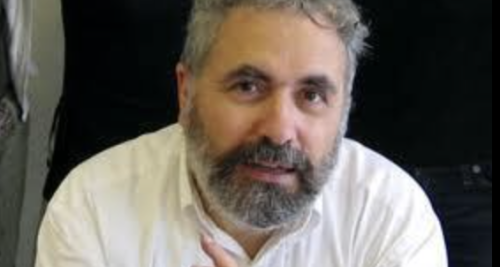The Arabs before Islam
Perhaps we should read the birth of Islam « backwards »: not from the religious to the geopolitical,
but rather from geopolitical to religious…
By Michel Gurfinkiel
 Visionary facing hostility from his fellow citizens, Muhammad left Mecca in 622, accompanied by a few dozen followers and their families, to settle in the neighboring city of Yathrib. It is the « migration » (hijra in Arabic, « Hegira » in French) that marks the beginning of the Islamic era. When he dies ten years later, his sect has become a religion, and it has conquered most of the Arabian Peninsula. Around 650, the year 28 of the Hijra, eighteen years after the Prophet’s death, Islam absorbed the Sassanian Persian states, from Mesopotamia to the Amu Darya, and wrested the Levant and Egypt from the Byzantines. Around 750, the year 128 of the Hijra, its domination extended from Spain to the borders of China.
Visionary facing hostility from his fellow citizens, Muhammad left Mecca in 622, accompanied by a few dozen followers and their families, to settle in the neighboring city of Yathrib. It is the « migration » (hijra in Arabic, « Hegira » in French) that marks the beginning of the Islamic era. When he dies ten years later, his sect has become a religion, and it has conquered most of the Arabian Peninsula. Around 650, the year 28 of the Hijra, eighteen years after the Prophet’s death, Islam absorbed the Sassanian Persian states, from Mesopotamia to the Amu Darya, and wrested the Levant and Egypt from the Byzantines. Around 750, the year 128 of the Hijra, its domination extended from Spain to the borders of China.
This « geopolitical miracle » – from a handful of fugitives to a universal Empire – holds a prominent place in Muslim apologetics: how can such significant and rapid progress be explained if not by faith, and its corollary, divine blessing… To further strengthen this argument, theologians and preachers also emphasized the « barbarity » (jahiliya) of pre-Islamic Arabs: « Once, we were an ignorant people, prey to our impulses… » declares a Muslim ambassador to an Ethiopian sovereign, even during the lifetime of Muhammad. « We worshipped idols, we fed on carrion, and we committed shameful acts. » Such was our miserable fate until Allah sent us His apostle.
The historical reality, however, could be much more complex and nuanced. Advanced Arab civilizations had formed before Islam. In the 7th century, many Arabs were no longer pagans, but monotheists, adhering to Christianity or Judaism. They already constituted, against the backdrop of old Empires, a new virtual Empire. So much so that one might need to read the birth of Islam « backwards »: not from the religious to the geopolitical, but rather from the geopolitical to the religious…
The French historian Christian-Julien Robin – one of the leading contemporary specialists on the Arabian Peninsula – reminds us that it, like its African equivalent, the Sahara, « has not always been a desert of sand and rocks. » With a relatively humid climate between 7000 and 4000 BCE in the southern part of the peninsula, and between 4000 and 1000 in the northern part, the vegetation was much richer and denser than today: in the depressions, overrun by permanent or temporary lakes, game proliferated and attracted hunters… But the intertropical front gradually shifted southward, causing the desert to spread across the entire peninsula, except for the oases in the north and east of the peninsula, which benefited from permanent aquifers, and the high mountains of Yemen and Oman…
The first Arabs, Semites related to the Akkadians of Mesopotamia, the Canaanites and Hebrews of the Levant, and the Abyssinians of the Horn of Africa, settled in the Peninsula (or superimposed themselves on older populations) at a time when desertification was not yet complete: they may have been sedentary farmers before becoming nomadic farmers. After the complete desertification of the region, they continue to combine or alternate various forms of agriculture with livestock farming.
From the Bronze Age, between 3200 and 1300 BCE, they also knew how to exploit copper, tin, and iron mines, as well as quarries of semi-precious stones such as lapis lazuli: a significant portion of this production was exported, just like the aromatic resins collected in the southern part of the peninsula, natron or mineral soda gathered from temporary lakes or oasis basins, and naphtha or native oil that surfaced here and there. Moreover, they themselves ensured the transportation and commercialization: through coastal shipping in the Persian Gulf and up to the mouth of the Indus as early as 2500 BCE, then in the Red Sea and along the African coast of the Indian Ocean; through land caravans following the domestication of camelids in the 2nd millennium BCE; through round trips in the open sea with India, using the monsoon, on the eve of the Christian era. In the Bible, « Ishmaelite » (one of the generic names for Arabs) is synonymous with « merchant. »
The Arabs are organized into family lineages, tribes, and tribal confederations, most often centered around a common place of worship. They also create states: the kingdom of Dilmun, which revolves around present-day Bahrain and dominates the southern shore of the Persian Gulf, appears around the year 2000 BCE; the kingdom of Saba, in the north of present-day Yemen – « Happy Arabia » – around the year 1000. Finally, they integrate into the global political game of the ancient East.
Like the Hebrews and the Phoenicians, they seem to have benefited from the double collapse towards the end of the 2nd millennium BCE, during the transition from the Bronze Age to the Iron Age, of the Egyptian and Hittite Empires. The Bible mentions various Bedouin principalities located near the Holy Land, Hagar, Kedar, Botzra, not to mention the Queen of Sheba, who sought an alliance with Solomon. Dilmun navigates between Babylonians, Kassites, Assyrians, and Persians for several centuries: Sargon II, the Assyrian conqueror of the 8th century, boasts that « Uperi, king of Dilmun, who lives like a fish in the middle of the sea » paid him tribute. The last Neo-Babylonian ruler, Nabonidus, stays for a long time in the oasis of Tayma, in the northern Arabian Peninsula: faced with the Persian threat, this Semitic monarch perhaps intends to mobilize his racial brothers.
At the beginning of the Christian era, the Arabs became major geopolitical players. In the south of the peninsula, the population is growing, urbanization is progressing, and local rulers are resisting Roman, Byzantine, or Persian incursions. They adopt a national script: the first and only authentically Arabic script, with magnificent square characters. On the religious front, traditional paganism is gradually replaced by Christianity – Byzantine Orthodox or Coptic – and especially by Judaism, which will be the official religion of the Himyar kingdom for one hundred and fifty years, from 380 to 523. Robin cites an inscription found in Zafar, the Himyarite capital: « King Yehudah Yakkuf built, laid the foundations, and completed his palace… with the help and grace of the Lord of the living and the dead, the Lord of heaven and earth, who created everything, with the prayer of his people Israel… » amen, shalom, amen
In the north, at the borders of the Negev and Transjordan, other Arabs, the Nabataeans, create a similar kingdom, also relying on advanced agriculture based on irrigation and trade. Faithful to Semitic paganism, they adopt a Greco-Roman way of life, as evidenced by the ruins of Petra, their capital. In 106, under Trajan, Rome annexed this hybrid country, which became the province of Arabia. But the Arab substratum does not disappear as a result, and on the contrary, it extends to the neighboring provinces of Palestine and Syria. Its population having collapsed following the Antonine Plague, in 165-170, the Empire indeed resorts everywhere to barbarian immigration: Germans or Slavs in the West, Berbers in Africa, Arabs in the East. These newcomers quickly Romanize, joining the army and then the administration. At the beginning of the 3rd century, we see two emperors of Syrian Arab origin: Elagabalus (from the Semitic El Gabal, « Supreme God Ordainer »), from 218 to 222, and Philip the Arab, from 244 to 249.
It was a close call, in the following years, that the Romano-Arabs did not create their own Empire. Queen Zenobia (the Latinized form of the Arabic Zenaïb, « Rose of the Desert ») rules over the oasis of Palmyra in Syria, a principality vassal to Rome. A new plague in 250 caused chaos: Zenobia showed such energy that she rallied the populations and soldiers of all the eastern provinces to her cause, and had her son Valhabat (from the Arabic Wahb Allah, « He who forgives in the name of God ») proclaimed emperor. For nearly two years, she ruled over the Levant, Egypt, and Eastern Anatolia, relying notably on the Christian communities. She mints coins in Antioch and Alexandria. Before bowing to Emperor Aurelian, who has just quelled a similar secession in Gaul and Britain.
The Roman Empire became Christian at the beginning of the 4th century. It is now confronted with the new Sassanian Persian Empire, where Zoroastrianism is the state religion: a « world war » that will last nearly three centuries and which, with neither of the two giants managing to prevail over the other, will eventually turn into a « cold war » and even a form of coexistence. The Arabs serve both sides, as auxiliaries or through buffer states: the Banu Hassan or Ghassanids, Romanized and Christianized, control a vast territory extending from the south of present-day Syria to Hejaz, passing through Jordan; the Banu-Lakhm or Lakhmids, faithful to paganism and close to the Persians, control the northeast of present-day Saudi Arabia and the southern shore of the Persian Gulf.
Suddenly, at the beginning of the 7th century, the « world war » reignites: a new Persian emperor, Khosrow II, taking advantage of a palace revolution in Constantinople, launches an attack on the Byzantine Empire in 603. For twenty-five years, it is a back-and-forth of lightning wars and counterattacks, devastating Anatolia, the Levant, and Mesopotamia.In 628, the two superpowers are bloodied: they resign themselves to returning to the lines they occupied before the conflict.
But that is counting without the Arabs. The more their masters exhaust themselves, the more their weight increases. Until then rivals, the tribes of the northern Peninsula unite, then request reinforcements from the southern tribes. They undertake the systematic conquest of a ruined Orient, or more precisely, they replace the failing Byzantine or Persian administrations, canton by canton, province by province. In the classical Muslim narrative, the Arabs provide protection to the « People of the Book »: what is understood as religious tolerance towards Jews, Christians, but also Zoroastrians or Sabians. But the word din, which means « religion » in Arabic, can also be understood as « law, » « code, » or « custom. » From then on, « protection » would mainly consist of maintaining or restoring the existing law. An attitude that seems to have been welcomed with relief by the local populations.
The Empires are trying to regain control of the lost provinces. Not only do they fail, but new provinces continually rally to these Arabs who restore peace and order – and simplify taxation in the process. In the Byzantine realm, the new masters initially present themselves as mere « delegates » of the emperor. And in the Persian space, as the successors of the Kings of Kings.
But after half a century, beyond many internal disputes among the victors, which Arab historiography echoes, this « de facto Empire » transforms into a fully-fledged Empire, centered around the Umayyads, a dynasty that settled in Damascus and established a centralized administration.
Is it to definitively distinguish itself from Byzantium or the Sassanids that it adopts a new state religion? The fact that it is the fourth Umayyad ruler, Marwan I, who publishes the Quran as we know it around 680, in a script derived from Syriac, the language spoken in Syria. The fact is that the fifth, Abd-al-Malik, son of the previous one, built around 690 the first purely Islamic monument: the Dome of the Rock in Jerusalem. And it is he, again, who replaces the gold and silver coins bearing the image of the Byzantine emperor with dinars and dirhams exalting « Muhammad, messenger of Allah. »
© Michel Gurfinkiel, 2025









